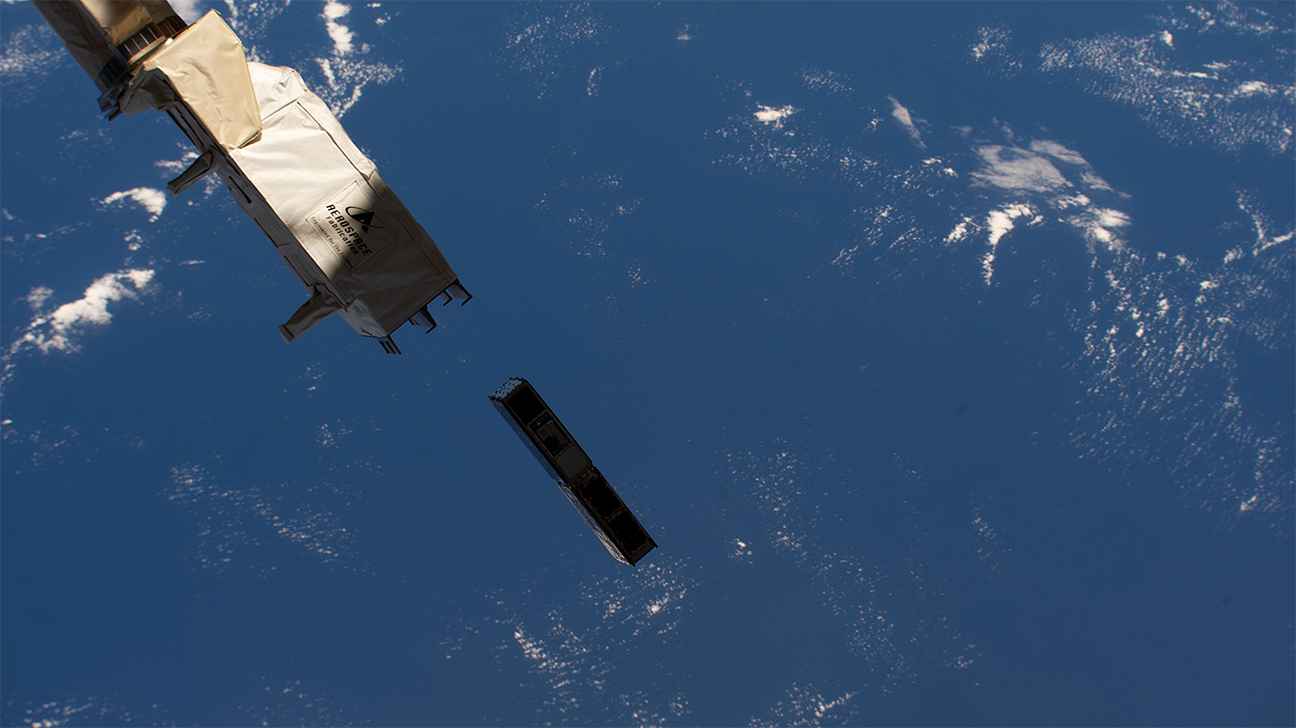AFRL partners with NASA in CubeSat navigation, communication mission
KIRTLAND AIR FORCE BASE, N.M. — The Air Force Research Laboratory’s, or AFRL, newest sensor experiment deployed from the International Space Station Dec. 29, 2022, hosted on NASA’s six-unit cube satellite named petitSat, or Plasma Enhancements in the Ionosphere-Thermosphere Satellite. The CubeSat’s mission is to study a layer in Earth’s upper atmosphere known as the ionosphere to provide insight into space weather disturbances and their impact on navigation and communication systems.

A sensor experiment named Gridded Retarding Ion Drift Sensor deploys from the International Space Station Dec. 29, 2022. The sensor, developed by the Air Force Research Laboratory’s Space Vehicles Directorate is hosted on NASA’s six-unit cube satellite petitSat, or Plasma Enhancements in the Ionosphere-Thermosphere Satellite. PetitSat will study a layer in Earth’s upper atmosphere known as the ionosphere to provide insight on space weather disturbances and their impact on navigation and communication systems. NASA’s Heliophysics SPORT CubeSat, also studying the ionosphere, is seen in the top left corner.
AFRL’s sensor, developed at the enterprise’s Space Vehicles Directorate, is named Gridded Retarding Ion Drift Sensor, or GRIDS, and is one of two main sensors flying on the mission. The GRIDS sensor is a low size, weight and power sensor built in-house over the past two years that will measure various ions in the ionosphere.
“This experiment will increase our fundamental understanding of how the ionosphere works and allow us to determine operational models and strategies to increase the resiliency of the Space Force’s space-based assets,” said Ryan Davidson, AFRL senior research physicist and program manager for the experiment. “The GRIDS sensor is designed to measure how much plasma is present in the atmosphere and in what direction it is moving. This should allow us to detect the presence of plasma bubbles and globs and give us information into how they are formed.”
Davidson explained the Earth’s upper atmosphere is where most low Earth-orbiting satellites reside and that their orbits are strongly affected by sudden density changes created by space weather. The accumulation of plasma in the form of bubbles and globs affects radio propagation of satellite-based navigation and communications passing in the vicinity of these plasma formations, which interfere with GPS and radar signals.
“In this experiment, AFRL hopes to determine the formation mechanism of plasma perturbations and use that information to feed predictive ionospheric models and make them more accurate to increase satellite navigation and communication, thereby increasing the protection of vital assets such as the Global Positioning System,” Davidson said.
AFRL anticipates GRIDS will be in orbit for six months. A second GRIDS deployment, also in collaboration with NASA, is planned for 2024.
About AFRL
The Air Force Research Laboratory, or AFRL, is the primary scientific research and development center for the Department of the Air Force. AFRL plays an integral role in leading the discovery, development and integration of affordable warfighting technologies for our air, space and cyberspace force. With a workforce of more than 11,500 across nine technology areas and 40 other operations across the globe, AFRL provides a diverse portfolio of science and technology ranging from fundamental to advanced research and technology development. For more information, visit: www.afresearchlab.com.
